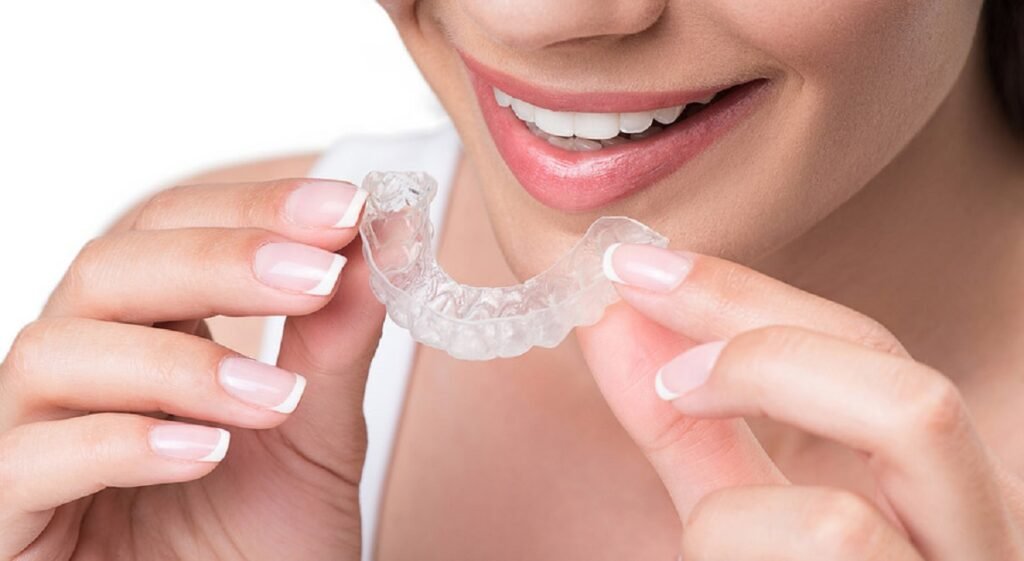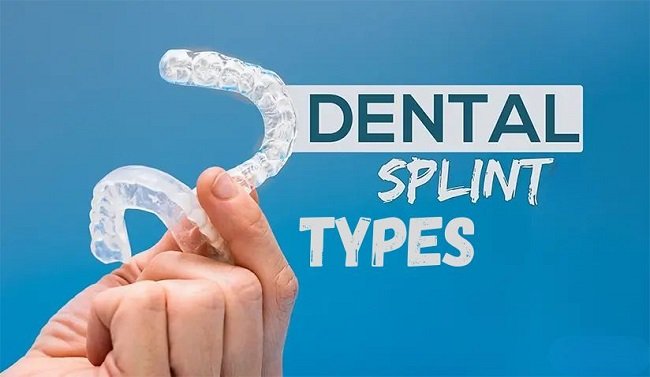If patients suffer from diseases like teeth grinding or other problems of the jaw joint, dental splints are quite important because they manage the pain and protect the teeth from further harm. Having a complete understanding of the dental splint cost or a specific dental treatment condition like the TMJ splint cost, occlusal splint price, etc., helps both professionals and patients make sound treatment decisions. As a top dental manufacturer, Aidite may not specifically manufacture splints, but we choose to foster learning in professionals on how to make wise choices regarding products and materials used in practice.

What is a Dental Splint?
A dental splint is an appliance that is made specifically for an individual and is used to protect, stabilize, or reposition teeth. These are frequently used for bruxism, TMJ disorders, trauma cases, or periodontal treatments. The kind of splint used is determined by the condition, yet one familiar concern over all types is the dental splint cost.
Different Kinds of Dental Splints and Their Costs
Here’s all you need to know about the various splints and what they cost.

1. Occlusal Guards
They are protective devices that fit the biting surfaces of your teeth, most commonly used for the treatment of bruxism and TMJ disorders. They also help to avoid tooth wear and are intended for comfort when sleeping or during jaw stress.
(a) Hard Splints
These splints, made of rigid acrylic, are used to control extreme grinding and jaw dysfunction by controlling the alignment of the jaw and minimizing strain on the joint.
- Application: Very good for TMJ disorders and chronic bruxism.
- Material: Rigid acrylic resin, occasionally fabricated with CAD/CAM accuracy.
- Price: A moderate to high dental splint cost, based on lab worker customization, diagnostics, and durability.
(b) Soft Splints
These are flexible, comfortable splints designed for mild bruxism conditions and as primary treatment.
- Application: Patient population with jaw soreness or slight clenching
- Material: A flexible thermoplastic that conforms well to the dental arch.
- Price: Lower dental splint price than hard splints; very cost-effective for short-term use.
2. Repositioning Splints
These splints modify the placement of the jaw to help relieve tension on the temporomandibular joint. Interocclusal devices are highly useful during the therapeutic phases of TMJ treatment.
- Application: TMJ dysfunction, joint clicking, bite correction.
- Material: Hard acrylic or durable composite materials.
- Price: High TMJ splint price from advanced diagnostic tests, occlusal mapping, and custom fit.
3. Stabilization Splints
These help to ensure even contact between the teeth along the whole arch and also help to limit jaw movement and reduce strain on the muscles.
- Application: Useful for jaw tension, severe bruxism, and headaches associated with bruxism
- Material: Custom-molded hard acrylic for a perfect fit.
- Price: Average dental splint price, depending on construction method and splint size.
4. Anterior Bite Splints
These splints allow pressure to be released from the back teeth, thus relieving excessive muscle activity and clenching.
- Application: Best for patients with localized clenching or muscle-related jaw pain.
- Material: Usually made from thermoplastic or rigid acrylic.
- Price: Tends to have a lower dental splint price but is subject to change based on frequency of adjustments and materials used.
5. Custom-Made Splints
These are custom-made from detailed patient impressions or intraoral scans for maximum comfort and accuracy.
- Application: Can be used in chronic bruxism, TMJ cases, as well as during post surgical phases.
- Material: Top-quality lab-processed acrylics or composite blends.
- Price: High dental splint cost per tooth due to customization, design intricacy, and extended use durability.
6. Permissive Splints
These splints facilitate natural jaw movements and aid in reducing strain on the masticatory muscles.
- Application: Commonly used for muscle-related TMJ disorders as a conservative treatment.
- Material: Solid resin or double-layer material.
- Price: Moderate to high TMJ splint cost due to fit accuracy and when lab work is done.
7. Non-Permissive (Direct) Splints
These splints create and redirect jaw motion, allowing them to be used for more complicated occlusal therapy.
- Application: Orthodontically used in long-term correction of bites and neuromuscular reset.
- Material: Clinical-grade resin or high-density acrylic.
- Price: Higher dental splint cost and occlusal splint price due to increased functionality and treatment precision.
What Affects the Price of Dental Splints?
Clarifying what contributes to the cost of a splint is important for managing patient expectations as well as clinic planning.

- Types of splints: TMJ, occlusal, or periodontal. Each type has uniquely designed, fabricated, and fitted processes that impact pricing.
- Customization: Custom appliances need impressions or digital scans, extra time in the lab, and special modifications, which increase the dental splint cost.
- Material used: The durability and dental splint price are influenced by the material it is made of, such as thermoplastics, composite resins, acrylics, and metal wires.
- Technology: The digital design and CAD/CAM systems provide improvements in precision but likely increase the occlusal splint price.
- Labor charges: Costs for skilled lab technicians or specialists who are involved in the procedure to create the splint result in a labor component for the TMJ splint price.
- The location of the clinic: If a practice is situated in an expensive part of an urban area or a high-cost-of-living area, the dental splint price will likely be higher, as reflected in the fees.
The dental splint cost per tooth can add up, especially if you’re splinting more than one tooth, and so it’s important to consider the full mouth (and SPD) situation. On our blog, we share the latest from our knowledge base about dental products, digital dentistry tools, material selection, and clinical techniques. Education leads to better patient outcomes and more efficient practices.
Explore the Aidite blog for different tools and routes to achieve efficacy in your dental splint cost versus material performance calculus.
Average Price Breakdown
| Splint Type | Average Cost Estimate | Notes | |
| Hard Occlusal Splint | $300–$800 | Durable, high-precision for severe bruxism | |
| Soft Occlusal Splint | $150–$400 | Comfortable and affordable for mild grinding | |
| TMJ Repositioning Splint | $500–$1,200 | Complex fitting, used for jaw alignment correction | |
| Stabilization Splint | $400–$900 | Full arch contact, often used for bruxism relief | |
| Anterior Bite Splint | $200–$600 | Targeted muscle unloading and clenching relief | |
| Custom-Made Splint | $500–$1,500+ | Highly personalized, longer treatment cycles | |
| Permissive Splint | $400–$900 | Allows natural movement, muscle relaxation focus | |
| Non-Permissive Splint | $600–$1,200+ | Restricts jaw motion, used in occlusal rehabilitation | |
| Periodontal Splint | $100–$300 per tooth | Cost increases with the number of teeth stabilized |
The periodontal splinting cost especially varies because sometimes only a few teeth need stabilization.
What to Look for When Choosing a Splint
Consider the following cost-related and clinical factors when providing splints:
- Patient Diagnosis: The nature of the condition will impact TMJ splint cost or periodontal splinting cost.
- Splint Material: Also affects dental splint price and durability.
- Number of Teeth Involved: Directly affects dental splint cost per tooth.
- In-House or Outsourced Fabrication: It matters for occlusal splint price, managing supply & integrating labs
- Treatment Duration: Longer treatment might require several splints.
FAQs
Q1. What is the average cost for a TMJ splint?
TMJ splint price depends on material and lab work, but complexity makes it, as a rule, moderate to high.
Q2. Does insurance cover dental splints?
If the dental splint is medically necessary, many insurance plans will pay some portion of the dental splint cost, particularly if they are written out for other medical conditions (ex: TMJ, bruxism).
Q3: How long does the dental splint last?
If you take care of a splint, it should last between 1 and 5 years. Still, depending on what you use it for and what it is made of, the lifespan can be diminished with wear and tear.
Dental Splint Cost — Is It Worth It?
For clinics, knowing the breakdown behind dental splint cost and how each splint type fits a clinical need increases treatment planning. Although TMJ splint cost, occlusal splint price, and periodontal splinting cost may sometimes appear high, they are important investments in your long-term oral health. This will allow you to provide different options for your patients, such as dental splint cost per tooth (mainly used for periodontal stabilization, making it easier to have flexible pricing or phased treatment). Aidite‘s mission is to help with better treatment planning and empower the clinics with industry knowledge and premium standard tools.



